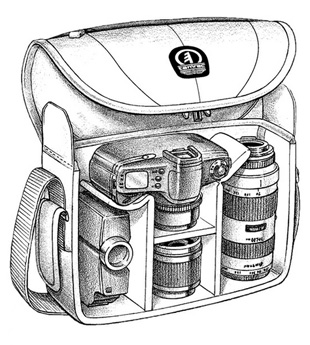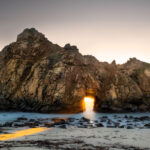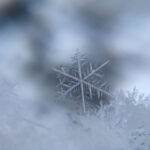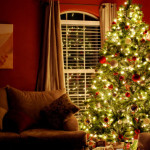
Planning Your Camera Gear
Before I share my advice with you I want you to know I am an avid outdoor photographer. It is my passion and the reason for me to wake up at 4 AM every Saturday instead of going out with friends.
We all know camera equipment is heavy and expensive, hence taking all this in the outdoors represents a risk and a burden. You have to be extremely careful of what you put into your bag, since there’s no turning back; you will have to carry that equipment until the end. And you really don’t want to carry a $1,000 lens that you ended up using to take four bad photos.
So here’s a list of what I take to the outdoors along with a few examples of what you can do with that equipment.
1. DSLR body with a wide zoom lens
I won’t even mention brand here. You should take whatever you feel comfortable with, within your budget. Although I would suggest having a body that can do bracketing (so you can play with HDR photography). The lens should be wide with a minimum range of 24mm, although you could do some more if you own a full frame camera. I prefer a zoom lens because, although heavier than a prime, it gives you more focal range to play with. So instead of carrying a prime 18mm, prime 55 and prime 100, you can take an 18–135 and save a lot of space in your camera bag.
2. A fast lens
I have a Canon 50mm that I absolutely LOVE, specially for traveling. Here are the reasons I like it:
- It’s the cheapest lens of the Canon lenses (about $130 in Amazon).
- It’s the lightest Canon lens in their lineup so you won’t tire.
- Max aperture f/1.8 makes it optimal for low light situations as well as ideal for more creative photographs where you can play with the depth of field.
3. A Flash kit with IR technology
Even though you’re going outdoors into the sun, I always recommend you carry your flash with you. Here’s why:
- You can take amazing sunset/sunrise shots exposing on the background while artificially lighting the foreground with your external flash.
- Eliminate harsh shadows on people’s faces. When you take photos of people on the sun, the shadows are unforgiving. Using an external flash will help reduce the shadows by filling those spaces with light.
- Shoot in confined spaces. Shoot at night.
4. A tripod
Every serious photographer knows the value of shooting with a tripod. Yes, I understand it’s a bit of a pain to carry it everywhere, however you will get SHARP images in exchange. Do you think sharp images are worth it? I do. It’s the difference between a beautiful photo you can print in A1 size or a beautiful photo you can print on a giant canvas.
Next time you consider bringing a tripod with you, think about all those nice photos you have you will never ever print because you know they’re not sharp enough.
5. A sturdy durable camera bag to carry your equipment
The new generation of DSLR camera bags have way more than just a good padding. They have super easy access to your camera so you won’t miss a shot.
About the Author:
Maro Chow writes for a site specializing in DSLR camera bags. You will find reviews as well as prices for select DSLR camera bags. They have information regarding the sturdiest, protective, easy to access bags for DSLRs.
Like This Article?
Don't Miss The Next One!
Join over 100,000 photographers of all experience levels who receive our free photography tips and articles to stay current:






@Mark I bookmarked your site to read later. Today’s a work day where I am so not much time on my hands.
That’s an an interesting point about Amazon commissions.
Yeah, I never liked the EF- 50/1.8 (Mk II?). Partly because it’s focal length is wrong for my idea of portrait photography (I also owned the 100/2, which, while a fab lens, was just too long on a crop sensor.) Now that I migrated to another brand I find myself favouring the 70mm (DX) focal length; which is 105mm full frame – as a NORMAL lens. Which is odd for probably everyone except me.
@Russ — You also bring out the point about the 50mm. A 50mm on a DX is ok if that is what you intend it for. It equates to about an 80mm in equivalent numbers. It can be a decent portrait lens length on a DX but you really need a good 50mm NOT THE ONE RECOMMENDED BY THIS ARTICLE!!! The Canon 50mm f/1.8 is a plastic toy that has questionable bokah for portraits!!! Whereas the 50mm L series is a GREAT lens for portraits on a DX in the Canon line. This further shows the inexperience of the author of this article. IF YOU WANT A NEUTRAL LENS ON THE DX, THE 35mm IS THE CLOSEST YOU WILL GET AS YOU STATED.
@Russ — I have written a post for this site before, and it was a specific subject that was hopefully helpful. These “authoritative” posts from folks with little experience are just BAD and need to be called out. This article was written as a way to promote their product when they should still be learning!!!! In just a few minutes of checking, I found the link to be a questionable review that had an Amazon Associates link to buy the products they “review”. The only reason for this is that they are chasing commissions from Amazon!!! They have no photography to back up their claims of being an “avid photographer”. This site should be able to quickly screen out such fluff articles that have such obvious financial motives as opposed to sincere articles from caring photographers of any experience. Even if they are motivated properly, this site should look for glaring errors in the articles and reject them for further editing or decline them.
Taking a 50mm prime is fine if you are shooting FX. DX you should be using a 35mm prime.
As for the reference to the “prime 18mm, Prime 55 and Prime 100” could you be more specific. I don’t think Canon makes anything like that but I could be wrong; after all I shoot Nikon.
Stefan, what camera do you have?
Mark, while I am in agreement with the points you raised why don’t you write an authorative post for us?
Screw all of this. Most of my photography excursions involve a rangefinder and a prime lens. Unless of course I’m working, then of course I bring a lot more.
Stefan — even my wide angle, a Canon 24-70mm f/2.8 weighs in over three pounds!!! Your little tripod would not hold it. It needs a heavy duty ball head to avoid creep!
Stefan — I am so glad that the light weight tripod works for you. I would not hold my lightest lens much less the camera and all that I would mount on it. I use a very light weight carbon fiber/magnesium Manfrotto with a gimbal head, a Canon 7D camera and lenses that weight between 3 and 10 lbs each. It is definitely bigger than a water bottle collapsed, but is worth the weight and trouble to carry it!!!! My point is that no matter how big and heavy the tripod is, YOU NEED IT. Hopefully, you can afford the lightest one that will carry the load that you need but carbon fiber costs a lot and not all can make that investment. Sturdy is the first requirement. Weight and size folded is next. And finally USING IT IS A MUST!!!
How Pompous! Seriously, EVERY PHOTO EXCURSION!!! Are you nuts!!! This is not even close to correct if you are shooting wildlife in a natural setting. Leave the wide angle at home unless you want to grab an occasional landscape. ADD a 400mm to 500mm prime first off!!!! Camera, lenses, teleconverters, filters as needed, extra batteries, lens cleaning system, tripod with ball head AND gimbal head and so on!!!
The problem here is that too many writers ASSUME that all photography is the same as the photography that they practice!!!! Photography INCLUDES many specialties!!! This list is wrong for portrait photography, wrong for macro photography, wrong for landscape photography, etc. Get more experienced writers or get some real editors to sift this junk out!!!!
Errr does a lenspen/microfiber/lens cleaner & lens cleaning paper count as equipment. I went shooting at a beach and before I knew it my front filter was covered in fine sea spray, I was shooting against the sun (I was shooting silhouettes so you know how THAT turned out) and I only had my shirt to wipe it off :(
What no extra batteries?
Considering the tripod: I will never again have an excuse for not bringing a tripod. I have a Sirui T-025. It’s under a kilogram and as small as a waterbottle. Best: It does not cost a fortune and perfect for light travelling.